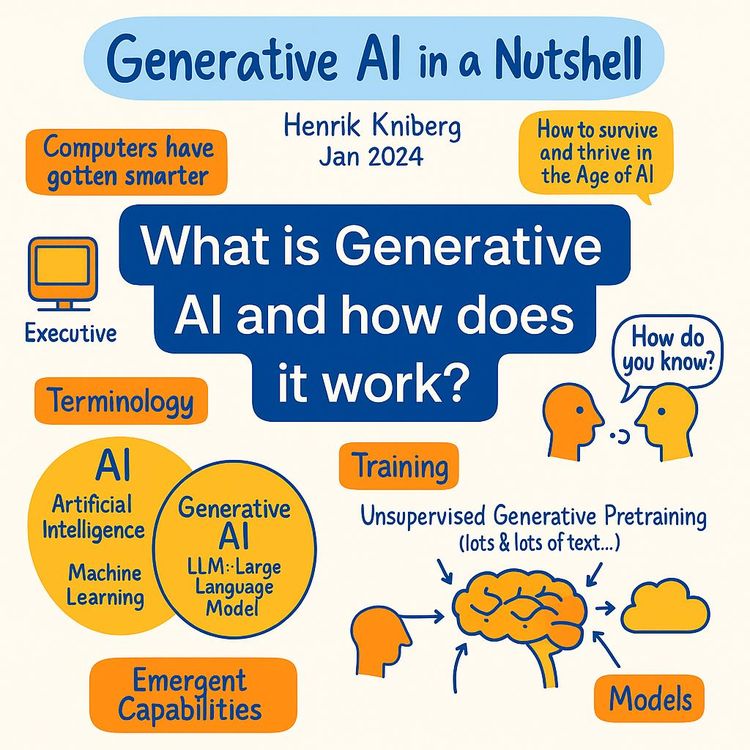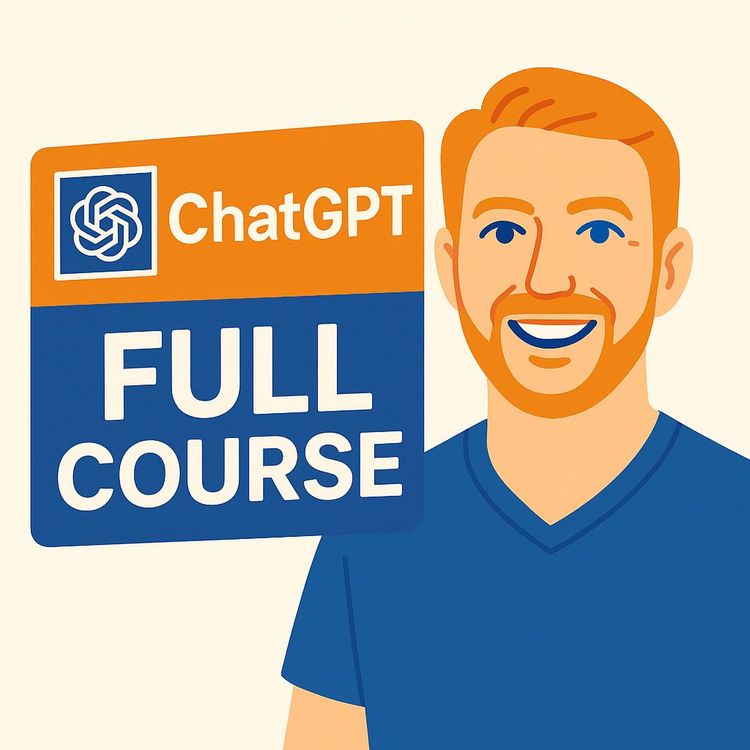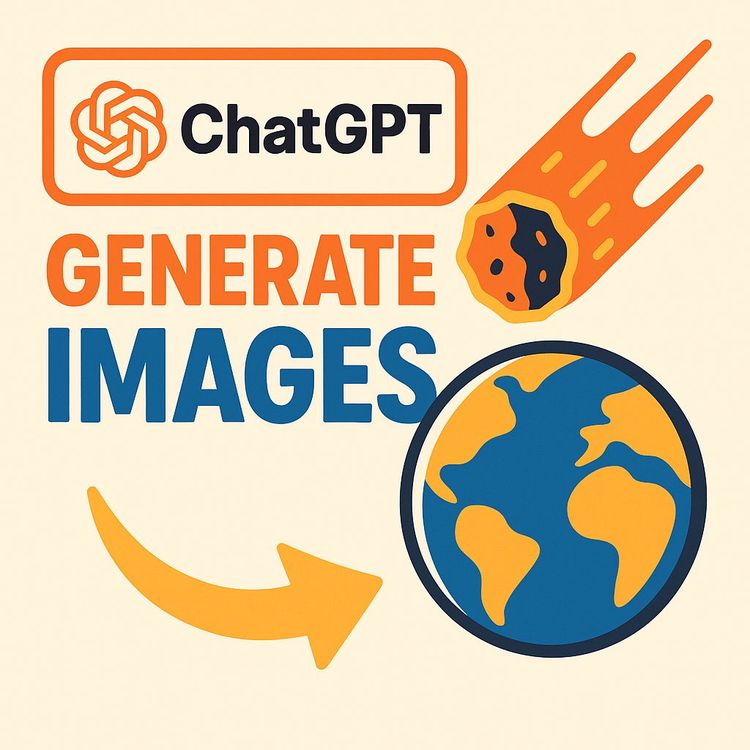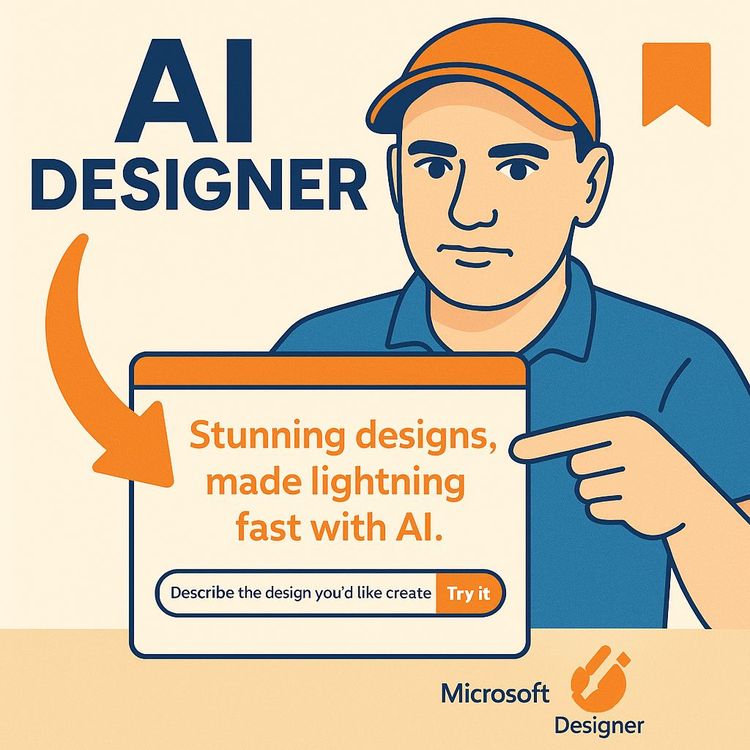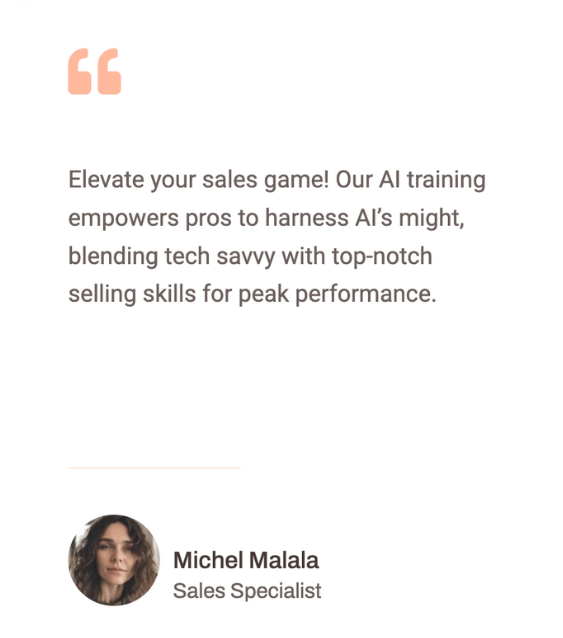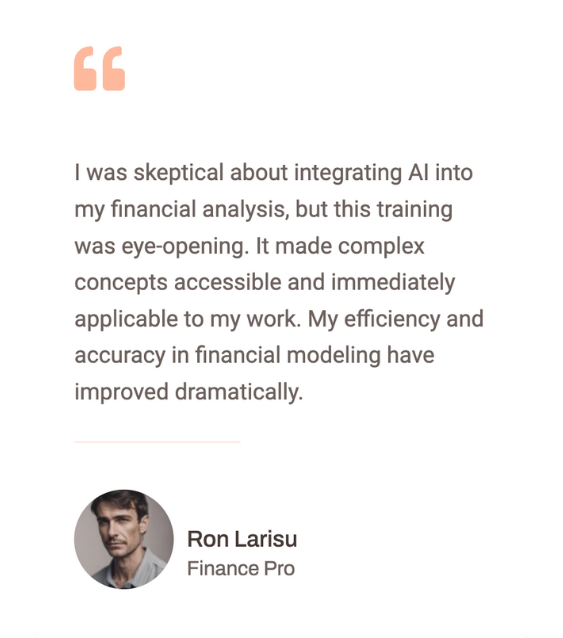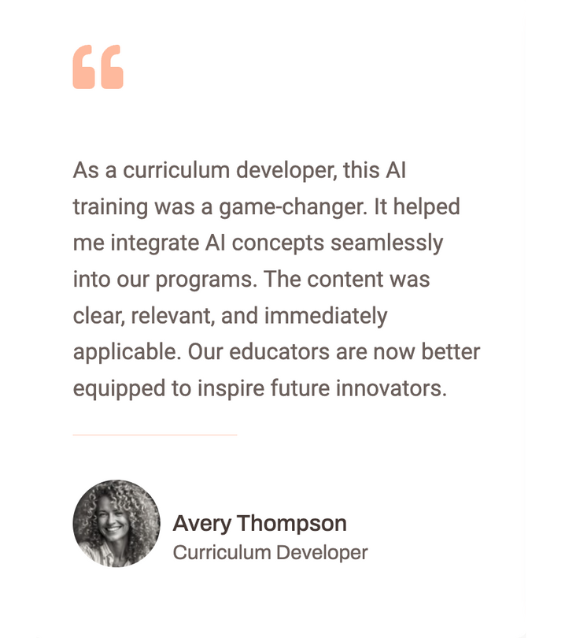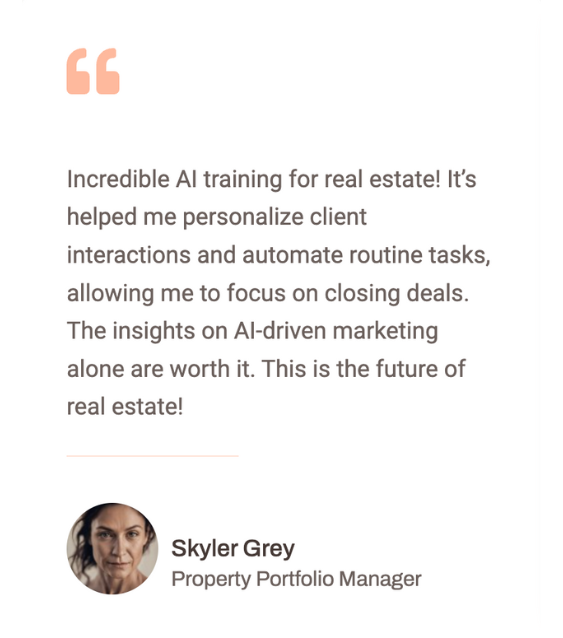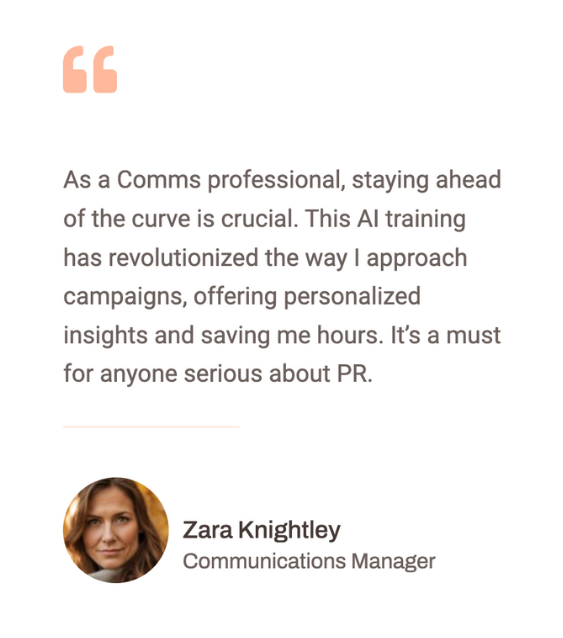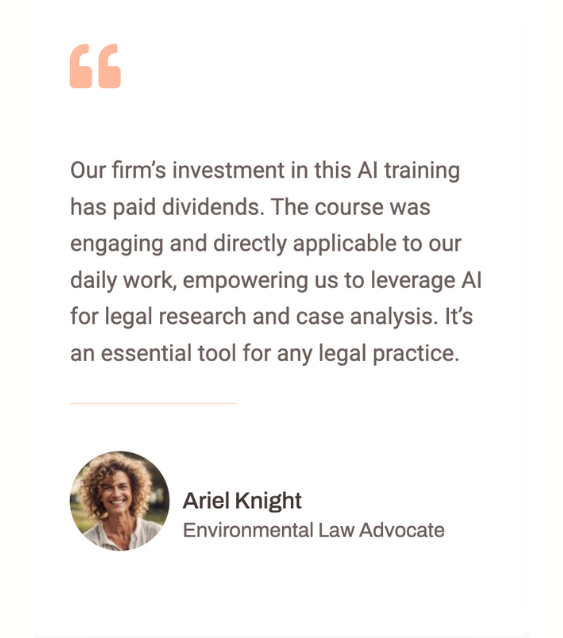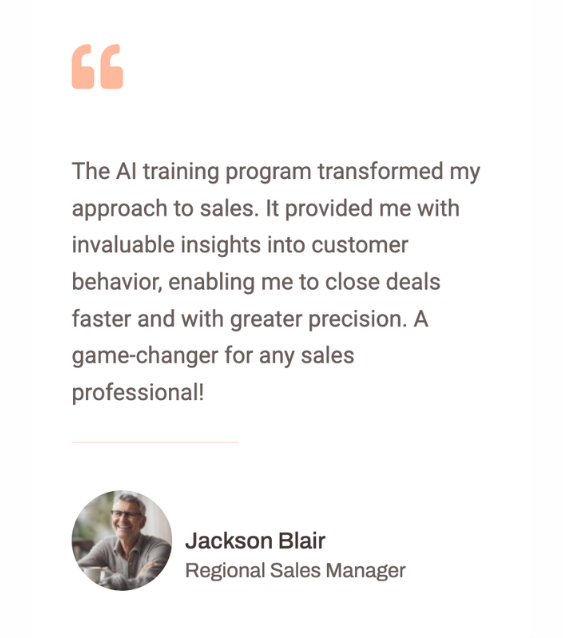Build and Sell No-Code Multi-Agent AI Workforces for Beginners (Video Course)
Build your first AI agent workforce from scratch,no code, real tools. Even as a beginner, learn to orchestrate agents, automate meetings and follow-ups, and package it as a service. Clear steps, case studies, and a simple path to recurring revenue.
Related Certification: Certification in Building and Selling No-Code Multi-Agent AI Workforces
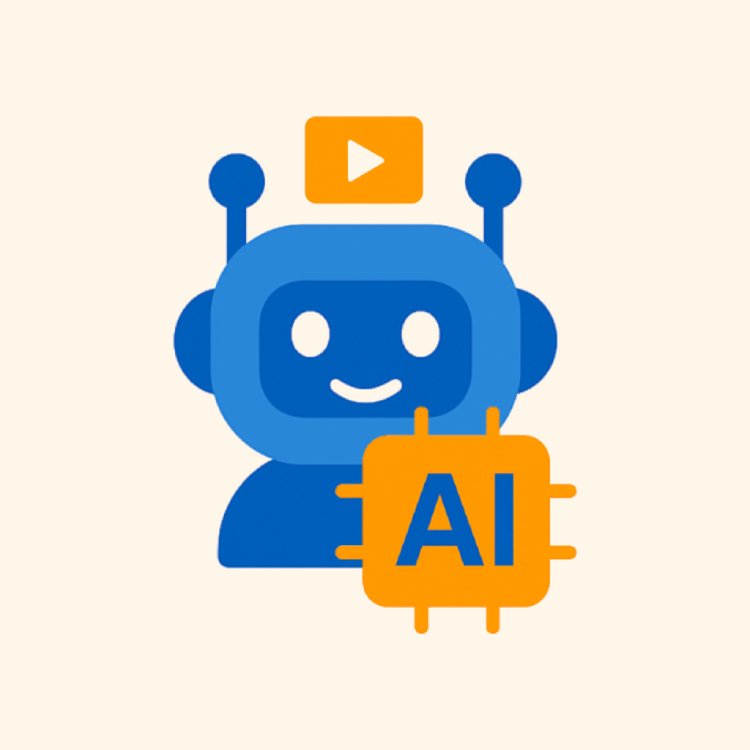
Also includes Access to All:
What You Will Learn
- Design multi-agent AI workforces and an orchestrator using no-code tools
- Build an end-to-end Meeting Assistant: scheduling, decks, transcription, and follow-up
- Create agent blueprints: prompts, KBs, memory, tools, and handoff contracts
- Integrate with calendars, CRM, Slack, and webhooks while adding QA and error handling
- Monetize and scale: audits, custom builds, pricing, retainers, and client acquisition
Study Guide
Introduction: Why AI Agent Workforces Are The Next Business Superpower
Business is leverage. The ones who win find ways to get more output from fewer inputs. AI agent workforces are the purest form of leverage we've ever had: teams of specialized, always-on digital employees that automate entire workflows,research, outreach, scheduling, content creation, follow-up,without burning out, asking for time off, or needing another meeting about a meeting.
This course shows you exactly how to build, package, and sell these AI workforces as a beginner using no-code tools. You'll learn foundational concepts, how agents work under the hood, and how to orchestrate multiple agents into one cohesive "department in a box." You'll also get a step-by-step build of a full Meeting Assistant workforce, plus frameworks to monetize this skill with audits, custom builds, and monthly retainers. Expect practical workflows, detailed prompts, real integrations, and client acquisition systems you can deploy immediately.
Here's the big shift: we're past single-use AI assistants. The edge now lives in collaboration,multiple specialized agents, coordinated by an orchestrator, executing complex processes end-to-end. The result is predictable output, instant scale, and higher margins. You're about to learn how to be the person who designs, deploys, and profits from that.
Quote to carry with you:
"AI isn't just coming for jobs. It's coming for entire departments." And leading analysts estimate AI agents will soon make around 15% of work decisions,up from almost none. That is your window of opportunity.
The Mindset Shift: From Operator To Orchestrator
Most people try to use AI like a smarter intern. That's small thinking. The real leverage comes when you stop "using AI" and start "designing systems." Your job isn't to do the work or even write code,it's to map workflows, assign roles, define handoffs, and build a team of digital employees that do the work for you.
- Think Lego: simple blocks (agents) assembled into complex systems.
- Think systems over tasks: automate outcomes, not individual actions.
- Think compounding: one well-built agent workforce powers dozens of use cases across clients with light customization.
Examples:
1) A solo consultant becomes a "one-person company" by deploying a sales prospecting workforce that researches leads, drafts emails, books calls, and creates CRM tasks without touching a keyboard.
2) A small agency replaces a scattered internal content process with an AI workforce that ideates topics, researches sources, drafts posts, designs visuals, and queues content,daily, on schedule.
Core Definitions: Speak The Language Of AI Workforces
- AI Agent: A digital employee with one clear role, a job description (prompt), access to tools, and optional memory/knowledge. It takes inputs, follows instructions, and produces outputs.
- AI Workforce: A team of agents collaborating to execute a full business process, like an entire department.
- Orchestrator Agent: The manager. It receives a goal, breaks it into tasks, delegates to sub-agents, tracks progress, and synthesizes final deliverables.
- Sub-agent: A specialist that reports to the orchestrator and does one job exceptionally well.
- Tools: External apps or functions agents can use (Google Search, CRM, Slack, Trello, calendar APIs, scrapers, file parsers).
- Knowledge Base: Curated reference content the agent can pull from (service descriptions, FAQs, policies, playbooks).
- Memory: Short- or long-term recall that preserves context across steps and sessions.
- Trigger: The event that starts the workforce (Slack message, webhook, form submission, calendar change, daily schedule).
- No-Code Platform: Visual builders to design and connect agents without writing code (Relevance.ai, Make, n8n).
Examples:
1) In a sales workflow, a "Research Agent" uses Google Search and LinkedIn scrapers (tools) and references an Ideal Customer Profile PDF (knowledge base) to produce a lead brief. It stores key facts (memory) for future emails.
2) In operations, a "Policy Compliance Agent" scans a new contract using a document parser (tool), checks it against your legal policy KB (knowledge base), and flags risk items for review.
The Three Pillars Of An AI Workforce: Specialization, Collaboration, Coordination
Build your workforce like a world-class team: one job per seat, clear handoffs, and a manager keeping it all moving.
- Specialization: Each agent is responsible for exactly one function. This reduces prompt bloat, improves reliability, and makes debugging simple.
- Collaboration: Agents pass outputs to each other with explicit contracts. No ambiguity about what's needed and what comes next.
- Coordination: The orchestrator governs the process, manages dependencies, and ensures the right work happens in the right order.
Examples:
1) Content Department in a Box: Topic Ideator -> Researcher -> Writer -> Editor -> Designer -> Scheduler. Each agent has tight scope, with the orchestrator managing deadlines and dependencies.
2) Customer Support Workforce: Intake Agent triages tickets -> Resolution Agent drafts answers referencing KB -> QA Agent checks tone/compliance -> CRM Agent logs interaction. Orchestrator tracks SLA and escalates edge cases.
Workforce Structures: Sequential, Parallel, Hierarchical
Structure determines speed, quality, and cost. Choose intentionally.
- Sequential (Assembly Line): Output of A feeds B feeds C. Best for accuracy-critical processes with tight dependencies.
- Parallel (Simultaneous Work): Multiple agents work at once. Best when tasks don't depend on each other (or depend on the same shared input).
- Hierarchical (Manager + Specialists): An orchestrator plans, delegates, and consolidates. Best for complex, multi-branch workflows.
Examples:
1) Sequential: Blog production where research must precede writing, which must precede editing and design.
2) Parallel: A market research workforce where five agents analyze different competitors at the same time, then a synthesis agent merges insights.
Anatomy Of A High-Performance Agent
Every agent has five building blocks. Get these right, and the system works.
- Prompt (Job Description): Clear role, responsibilities, inputs, outputs, constraints, and style guide.
- Resources (Inputs): Files, transcripts, data, or variables the agent must read.
- Tools (Capabilities): APIs, functions, scrapers, parsers, calendars, messaging apps.
- Knowledge Base (Context): Documents and reference material to ground responses.
- Memory (Recall): Session memory for step-to-step continuity and long-term memory for preferences and historical data.
Examples:
1) A Proposal Writer Agent with a prompt that defines voice and structure, tools to convert Word to PDF, knowledge base of past winning proposals, and memory of client preferences like tone and pricing tiers.
2) A Finance Reconciliation Agent with CSV ingestion tools, a KB of chart of accounts, and memory of recurring vendors to auto-categorize with better accuracy over time.
Triggers: How AI Workforces Wake Up And Get To Work
Triggers make work happen without you pushing buttons all day. Common triggers include a Slack mention, a CRM stage change, a form submission, a webhook from another tool, a new file in cloud storage, or a scheduled time.
Examples:
1) Slack Trigger: "@assistant create a client onboarding pack for ACME" starts a workforce that generates docs, invites, and a kickoff agenda.
2) CRM Trigger: Moving a lead to "Proposal" triggers a workforce that drafts the deck, creates a price sheet, and schedules a presentation.
Platforms & Tools: What You Need (And Don't Need) To Build
You don't need to code. You do need tool literacy and clear thinking.
- No-Code Orchestrators: Relevance.ai, Make, n8n (build workflows, call LLMs, connect APIs).
- LLM Providers: OpenAI, Anthropic, Google (choose based on quality, cost, and tool support).
- Vector Databases/KB: Built-in KBs, Pinecone, Chroma for RAG (retrieve relevant chunks).
- Integrations: Google Workspace, Slack, HubSpot, Trello, Notion, Gmail. Use native connectors or webhooks.
- Secret Management: Store API keys securely (platform vaults or environment variables).
- Logging & Monitoring: Keep transcripts, errors, timing, and cost per run for optimization.
Examples:
1) Use Make to watch a Slack channel, pass text to an orchestrator prompt, branch to agents via webhooks, and write results to Notion and Google Drive.
2) Use Relevance.ai to define agents with roles and tools, wire an orchestrator that calls sub-agents, and expose the entire workforce behind a Slack command or API endpoint.
Case Study: Build A Meeting Assistant Workforce (End-To-End)
Objective: Automate scheduling, prep, presentation creation, note-taking, follow-up tasks, and summaries,triggered by a simple Slack message.
Team Composition:
- Orion (Orchestrator): Parses the request, plans the workflow, delegates tasks, reconciles outputs.
- Polaris (Internal Participant Finder): Looks up internal employees from a directory (CSV or HRIS export).
- Lania (Lead Locator): Pulls external contacts from CRM and enriches via Google and LinkedIn.
- Gamma (Presentation Preparer): Generates a branded deck using your style guide and research inputs.
- Borealis (Meeting Booker): Finds time, creates calendar event, sends invites.
- Nate (Notetaker): Records, transcribes, summarizes, creates tasks, and sends recap emails.
Trigger Example:
Slack message: "@orion book a meeting with Adam from ExampleCorp next Tuesday to pitch our AI services. Please prepare a presentation."
Designing The Prompts (Blueprints For Each Agent)
Orion (Orchestrator) Prompt Essentials:
- Role: "You are a project manager for a meeting assistant workforce."
- Inputs: Slack message text, user ID, time preferences.
- Tasks: Determine internal vs external meeting, identify participants, decide if a deck is needed, delegate accordingly.
- Output: A structured plan (JSON) with tasks, assigned agents, and expected outputs.
Polaris Prompt Essentials:
- Role: "You find internal participants and contact info."
- Inputs: Meeting purpose, department keywords, internal directory data.
- Tools: CSV/DB search.
- Output: Names, emails, titles, and relevance rationale.
Lania Prompt Essentials:
- Role: "You locate external leads and enrich profiles."
- Tools: CRM API, Google Search, LinkedIn scraper.
- Output: Accurate contact data + company summary.
Gamma Prompt Essentials:
- Role: "You produce a branded deck."
- Inputs: Company style guide, service descriptions (KB), research from Lania.
- Tools: Presentation API (Gamma).
- Output: Link to deck with slide notes.
Borealis Prompt Essentials:
- Role: "You schedule the meeting and send invites."
- Tools: Calendar API (Google Meet), time zone resolver.
- Output: Confirmed event with link + invite status.
Nate Prompt Essentials:
- Role: "You attend (or ingest) call audio, transcribe, summarize, and create action items."
- Tools: Recorder/transcription, Trello API, Gmail API.
- Output: Summary, decision list, task links, email recap.
Example Outputs:
1) Orion JSON Plan: {task: "Find external lead details", agent: "Lania", inputs: {...}}; {task: "Prepare deck", agent: "Gamma", inputs: {...}}; {task: "Book meeting", agent: "Borealis", inputs: {...}}.
2) Nate Deliverables: Transcript link, concise summary, Action Items (Owner, Due Date, Priority), Trello links, email sent confirmation.
Workflow Execution: The Handoff Dance
1) Request: User triggers via Slack with intent and context.
2) Plan: Orion parses message, identifies participants, confirms presentation requirement, and drafts a plan.
3) Enrich: Lania fetches and enriches contact data, returning validated info.
4) Build: Gamma generates a deck using service KB + Lania's research.
5) Book: Borealis proposes times, confirms availability, and creates the calendar invite.
6) Record: Nate receives the meeting link, records/transcribes. If recording isn't allowed, it ingests the call's post-meeting transcript or notes as a fallback.
7) Follow-Up: Nate summarizes, creates tasks in Trello, and emails participants with outcomes and next steps.
Error Handling Examples:
1) Lania can't find contact: Orion asks the user for clarification or tries a secondary source (company website contact page).
2) Gamma deck generation fails: Orion retries with simplified inputs or uses a template stored in Drive as backup.
Knowledge Base & Memory Setup For The Meeting Assistant
Knowledge Base Structure:
- Company Services: Services, case studies, pricing notes.
- Brand Guidelines: Voice, tone, slides style guide.
- Meeting Templates: Sample agendas, follow-up templates.
- Internal Directory: Employee roster with roles and emails.
Memory Strategy:
- Session memory: Preserve request context and decisions for the current workflow.
- Long-term memory: Store client-specific preferences (e.g., "ExampleCorp prefers Tuesdays, tone: formal, follow-up within 24 hours").
Examples:
1) Gamma pulls value propositions from the services KB and adapts them to the prospect's industry from Lania's research.
2) Nate remembers that the client prefers Trello over Asana and creates tasks in the right tool automatically.
Testing, QA, And Metrics For Reliability
Treat your workforce like a product, not a toy. Measure and iterate.
- Test Scenarios: Internal-only, external-only, different time zones, missing data, deck/no-deck.
- QA Gates: Orchestrator check before final send; human-in-the-loop approval for first few runs.
- Metrics: Completion rate, average time to completion, error rate by agent, cost per run, client satisfaction (simple thumbs up/down in Slack).
Examples:
1) A staging Slack channel where the workforce posts previews instead of sending real invites; you approve with "/approve" to continue.
2) A dashboard that shows run history, cost by run, bottlenecks (e.g., Lania averages 2 minutes longer when LinkedIn scraping fails).
Two More Case Studies: Seeing The Pattern Everywhere
Case Study A: Sales Prospecting Workforce
- Trigger: New account added to CRM or a weekly niche list upload.
- Agents: ICP Validator -> Researcher -> Personalization Writer -> Sequence Builder -> CRM Logger -> Analytics Reporter.
- Tools: CRM API, LinkedIn scraper, email platform API, spreadsheet parser.
- Outputs: Personalized emails, light-touch social messages, CRM updates, weekly performance report.
Case Study B: Content Production Workforce
- Trigger: Slack command "/content plan Q2" or editorial calendar change.
- Agents: Topic Ideator -> SERP Researcher -> Outline Builder -> Draft Writer -> Editor/Fact-Checker -> Designer (for thumbnails/graphics) -> Scheduler.
- Tools: SEO API, Google Docs, design API, social scheduling tool.
- Outputs: SEO-informed content ready to publish with consistent quality.
Examples:
1) Sales: The Personalization Writer pulls one hook from a client case study and one insight from the lead's recent post to craft a first-line opener that doesn't feel templated.
2) Content: The Editor Agent runs hallucination checks by comparing claims against links in the research bundle and flags anything that lacks a source.
The Business Case: Why Clients Buy AI Workforces
Business leaders care about outcomes. Your pitch is simple: lower variable costs, more throughput, consistent quality, and instant scale. A digital team replaces the chaos of human bottlenecks with a predictable machine.
- ROI Drivers: Fewer manual hours, fewer errors, faster cycle times, more sales touches, and better documentation.
- Risk Reduction: Agents don't forget steps, don't get distracted, and follow SOPs every time.
- Scale: Duplicate the workforce across departments or clients with minor tweaks. That's scalable leverage.
Statements To Use:
1) "A one-person, billion-dollar company is plausible because a workforce of agents can execute like a hundred people."
2) "Think of this like building with Lego,simple blocks connected into a powerful system that runs on its own."
Monetization Model: Diagnose, Design, Deliver, Scale
This is your go-to commercial framework. It's simple, ethical, and highly profitable.
1) Diagnose (Paid AI Workforce Audit)
- What you do: Map current workflows, identify bottlenecks, estimate ROI, and produce a roadmap.
- Deliverables: Process map, opportunity report, recommended agent roles, tool list, build estimate.
- Why it works: You become a trusted advisor before any implementation. Clients pay for clarity.
2) Design & Implement (The Custom Build)
- What you do: Construct the agents, orchestrator, tools, KB, triggers, and guardrails.
- Deliverables: Working workforce, documentation, training, pilot launch.
- Pricing: High-value project fee because you're replacing roles or a full function.
3) Manage & Scale (Recurring Retainer)
- What you do: Monitor performance, update prompts, expand scope, add new agents, and provide analytics.
- Deliverables: Monthly reports, uptime/reliability, improvements roadmap.
- Revenue: Predictable MRR with optional usage tiers.
Examples:
1) Audit: For a marketing agency, you discover content bottlenecks and propose a parallelized workforce that triples output at a fraction of the cost.
2) Retainer: You offer a "Growth Plan" that includes new agent rollouts every month and quarterly workflow optimizations.
Pricing And Packaging
Keep pricing outcome-based, not hours-based. You're selling a department, not a script.
- Audits: Flat fee. Includes discovery, mapping, and roadmap. Creditable toward build if they proceed.
- Builds: Tiered project fees depending on scope (number of agents, integrations, compliance needs).
- Retainers: Monthly fee tied to usage thresholds, support level, and number of workflows maintained.
- Optional: Performance bonuses for sales or qualified bookings from agent activity.
Examples:
1) "Ops Pack" for service businesses: Intake, scheduling, follow-up, task creation,fixed project fee plus monthly care plan.
2) "Sales Pack" for agencies: Research, personalization, multichannel outreach, CRM hygiene,performance bonus on top of retainer.
Client Acquisition: Warm Outreach, Cold Outreach, Authority Flywheel
Ideal Clients: Service businesses drowning in repeatable processes,contractors, law firms, real estate, marketing agencies, consultancies. They feel the pain and value predictability.
Phase 1: Warm Outreach (Proof First)
- Ask for referrals to offer a complimentary mini-assessment (not a free build).
- Use small proof wins to create case studies and tighten your pitch.
Phase 2: Cold Outreach (Systematic Testing)
- Choose four niches. Draft one highly specific value proposition per niche. Send at volume. Track open/reply rates and booked calls. Double down on the winner.
- Lead with a concrete outcome: "Replace your scheduling and dispatch with a 24/7 AI workforce for less than one employee."
Phase 3: Authority Flywheel (Organic Pull)
- Document your builds, before/after outcomes, and lessons on LinkedIn or YouTube.
- Results become stories. Stories attract clients. Clients create new results. Keep the loop spinning.
Examples:
1) Warm DM: "I'm automating end-to-end scheduling, prep, and follow-up for client meetings. I'm doing a few free assessments to build case studies,anyone come to mind?"
2) Cold Email: "Subject: Dispatch without dispatchers. Body: We deploy an AI workforce that takes inbound calls, schedules jobs, and texts reminders. Clients cut no-shows by 30% and save 20 hours/week. Open to a 15-minute walkthrough?"
The Audit Playbook: How To Diagnose Like A Pro
Discovery
- Map the process: Start and end states, actors, inputs/outputs, tools, and failure points.
- Quantify: Work volume, hours spent, error rates, SLA misses, handoff delays.
- Identify: High-frequency, high-friction tasks with clear rules or templates.
Deliverable
- Visual process diagram (describe steps in plain language).
- Agent blueprint: Roles, prompts, tools, triggers, KB, and memory needs.
- ROI estimate: Time saved, error reduction, throughput increase.
- Phased rollout: Start small, deliver value fast, then expand.
Examples:
1) A law firm intake process with five handoffs becomes a three-agent workforce: Intake -> Conflict Check -> Document Prep.
2) A contractor's inbound calls turn into tickets, quotes, and scheduled jobs with a structured orchestrator and two specialists.
From SOPs To Agents: The Design Translation
Turn existing SOPs into agent instructions. Keep it tight and testable.
- Pull verbs and decisions from SOPs to define agent responsibilities.
- Convert checklists into step-by-step prompts with acceptance criteria.
- Define input and output formats explicitly (prefer structured JSON or CSV where possible).
- Add guardrails: "If uncertain, request clarification in one concise question."
Examples:
1) "Create a proposal" SOP turns into three agents: Requirements Collector, Proposal Writer, Pricing Checker,each with specific inputs and outputs.
2) "Post-purchase follow-up" SOP becomes: Survey Sender -> Sentiment Analyzer -> Upsell Recommender -> CRM Updater.
Knowledge Base Architecture: How To Build Useful Context
Good outputs require good inputs. Curate, chunk, and tag.
- Sources: Service descriptions, policies, style guides, FAQs, case studies, industry glossaries.
- Chunking: Split docs into small, meaningful sections for retrieval-augmented generation (RAG).
- Tagging: Add metadata (topic, audience, product) for precise retrieval.
- Versioning: Keep versions and update logs. Don't let stale content drive results.
Examples:
1) Sales KB includes customer stories by vertical. The agent pulls the most relevant story for each lead's industry.
2) Support KB includes approved responses and escalation rules so the Resolution Agent never invents policy.
Memory Tactics: When And How To Remember
Use memory strategically,enough to be useful, not so much that you confuse the model.
- Session Memory: Keep in-context details for the duration of a workflow (meeting purpose, participants, deadlines).
- Long-Term Memory: Store client preferences, recurring decisions, and historical outcomes in a small profile record.
- Forgetting: Clear or rotate memory to avoid drift and hallucinated facts.
Examples:
1) The Outreach Agent remembers that Jane prefers short emails with bullet points and always includes pricing ranges if requested.
2) The Scheduling Agent remembers time zones and preferred meeting lengths for each frequent contact.
Tool Integration Patterns: Make, n8n, And Webhooks
Most of your work is connecting what already exists.
- Direct Connect: Use native integrations where possible (Google Calendar, Slack, HubSpot, Trello).
- Webhooks: For custom workflows or tools without native connectors.
- Middleware: Use Make or n8n to transform data formats and handle retries.
- Error Handling: Add retries, fallbacks, and alerts to a logging channel.
Examples:
1) Lania calls a CRM via webhook, enriches results in the LLM, and returns a clean JSON object back to Make for downstream steps.
2) A Designer Agent calls a design API with a structured payload and returns an image URL for the Scheduler to post.
Guardrails, Safety, And Compliance
Trust is a feature. Design for safety from day one.
- Data Security: Use least-privilege access, encrypt API keys, and restrict file scopes.
- PII Handling: Mask or minimize storage of personal data. Purge logs when not needed.
- Human-in-the-Loop: Require approvals for sensitive actions (contracts, legal advice, financial changes).
- Audit Trails: Keep records of decisions for accountability.
Examples:
1) A Finance Agent drafts categorization changes but requires manual approval before posting to the accounting system.
2) A Legal Drafting Agent produces templates but cannot send them; the orchestrator routes drafts to an attorney for approval first.
Evaluation And Continuous Improvement
An agent workforce is a living system. Iterate relentlessly.
- Define KPIs: Speed, accuracy, conversion, cost per run, error rate.
- Build Feedback Loops: Simple thumbs up/down and a comment box in Slack; auto-log outcomes.
- A/B Test Prompts: Version prompts and compare performance.
- Cost Control: Cache frequent outputs, reuse research, and prune unnecessary steps.
Examples:
1) Two versions of the Personalization prompt are tested across 500 emails; the winner increases replies by 22%.
2) Caching competitor profiles reduces cost per prospect by 40% and speeds up runs by half.
Pitfalls To Avoid (And How To Dodge Them)
- Overloading One Agent: One agent with ten jobs fails unpredictably. Split roles.
- Vague Outputs: Always specify output format and acceptance criteria.
- No Ground Truth: Without a KB, models make things up. Feed them real data.
- Ignoring Edge Cases: Build fallbacks for missing data, rate limits, and API failures.
- Skipping Documentation: If you can't explain how it works, you can't sell or maintain it.
Examples:
1) "Write a proposal" fails often. "Produce a 7-section proposal with headings X, Y, Z, and a pricing table with three tiers" succeeds.
2) LinkedIn rate limit hit? Switch to Google, use company site, or pause and request a manual override via Slack.
Documentation And Handover: Make It Maintainable
Clients pay for predictability. Give them clarity.
- What to Document: Architecture diagram (in words), agent roles, prompts, tools, KB sources, triggers, error handling, and runbook for common issues.
- Handover: Recorded walkthrough, admin access, and quick-start guide.
- Training: Simple videos for "how to trigger," "how to approve," and "how to read reports."
Examples:
1) A one-page "How the Meeting Assistant Works" that any new team member can follow in five minutes.
2) A "Break Glass" doc with steps to pause the workforce and switch to manual if needed.
Proposal And Statement Of Work (SOW) Outline
Win deals by removing uncertainty.
- Problem & Desired Outcome: Use the client's own numbers and pain points.
- Solution Overview: Describe the workforce like a department,what it does, not just how.
- Scope: Agents, tools, integrations, triggers, approvals.
- Timeline & Phases: Pilot, rollout, scale.
- Pricing & Terms: Project + retainer + optional performance bonuses.
- Success Metrics: Define what "done" looks like.
Examples:
1) "We will reduce time-to-book from two days to two hours and cut no-shows by 20%."
2) "Sales outreach volume increases 4x with the same headcount, while maintaining personalization quality."
Scaling Your Practice: From Freelancer To Agency
Once you have repeatable wins, build a real business.
- Productize: Turn common builds into packages with clear deliverables.
- Hire Builders: Train others to assemble your frameworks and prompts.
- Templates: Maintain a library of prompts, workflows, and KB structures for rapid deployment.
- Niche Depth: Specialize in one industry to dominate it, then expand.
Examples:
1) "Real Estate Ops Pack": Lead intake, comp analysis, showing scheduler, follow-up nurtures.
2) "Agency Growth Pack": Cold outreach, qualification, proposal builder, case study generator.
Advanced Design Patterns: When You're Ready To Level Up
- Blackboard Architecture: Agents write to and read from a shared workspace (the "board"), enabling emergent collaboration.
- Event Bus: Orchestrator publishes events; agents subscribe to topics they can handle.
- Planner-Critic Loop: One agent drafts a plan; another critiques it and suggests improvements; orchestrator reconciles.
- Structured Outputs: Use JSON schemas for tool calls and handoffs to reduce ambiguity.
Examples:
1) Competitive Analysis: Parallel agents analyze pricing, features, reviews, and positioning, then a Synthesis Agent consolidates on the blackboard.
2) Creative Campaigns: Planner proposes three concepts; Critic scores against brand guidelines; Orchestrator selects and assigns production.
Selling With Proof: Before/After And Live Demos
Don't argue. Demonstrate.
- Before/After: Show the old workflow (screenshots, time spent) and the new one (one Slack message triggers everything).
- Live Demo: Trigger a workforce in real time and narrate what's happening behind the scenes.
- ROI Snapshot: Time saved, errors reduced, and outcomes improved in a single page.
Examples:
1) Demo: Type "/book meeting with Alex at NorthPeak, pitch analytics, need deck" and watch the plan, enrichment, deck, and invite happen in minutes.
2) One-Pager: "We reclaimed 35 hours/month for the founder and booked 18% more qualified calls."
Legal, Ethical, And Change Management Considerations
Long-term relationships require trust and care.
- Transparency: Make it clear where AI is used and where humans step in.
- Consent: For call recording and data usage, follow the client's policy and local regulations.
- Job Impact: Position AI as an assistant that removes grunt work. Upskill staff to manage and improve the system.
- Policy: Provide an AI usage policy template for clients.
Examples:
1) The Meeting Agent announces in the calendar invite that a transcript will be generated and shared.
2) During rollout, the client's team gets a "human-in-the-loop" training to build confidence and catch issues early.
Common Questions You'll Hear (And How To Answer)
- "Will this replace my team?" It replaces repetitive tasks and augments your team so they can focus on critical thinking and relationships. Most clients reallocate people to higher-value work.
- "How accurate is it?" We use your own knowledge base, approvals for sensitive tasks, and QA agents to maintain high accuracy.
- "What if something breaks?" We build fallbacks, alerts, and manual overrides. You'll have a clear runbook.
- "Is my data safe?" We minimize data storage, use secure key management, and restrict access by design.
Examples:
1) A client reduced manual scheduling by 90% and repurposed that time to client service, increasing retention.
2) A support team used AI to draft responses while humans approved the final send for the first month,then fully automated common cases.
Your First 3 Deployments: A Practical Path
Deployment 1: Meeting Assistant Workforce
- Small scope, immediate value, clear ROI.
Deployment 2: Sales Research + Personalization
- Clear metric: replies and booked calls. Easy to quantify impact.
Deployment 3: Content Production
- Build a weekly cadence and grow share of voice for the client.
Examples:
1) Client A: A boutique consultancy triples outreach volume and books twice as many intro calls in a month with the same team size.
2) Client B: A coaching business runs a weekly content machine that never misses, with a distinct voice and consistent CTAs.
Quality Bar: What "Good" Looks Like
- Predictable: Same trigger, same outcome, minimal variance.
- Explainable: Clear logs, steps, and decisions that make sense.
- Efficient: Reasonable cost per run; no redundant calls.
- Durable: Handles edge cases gracefully and recovers from errors.
- Valuable: Saves time or makes money in a way the client can feel and measure.
Examples:
1) The orchestrator catches missing contact info and asks one precise question instead of failing silently.
2) The notetaker produces a three-part summary: outcomes, decisions, and action items,with owners and due dates,every time.
Your Authority Kit: Assets To Build As You Go
- Portfolio: Redacted screenshots of plans, outputs, and dashboards.
- Case Studies: Problem, solution, results, quotes.
- Demo Videos: Short, narrated screen recordings of workflows in action.
- Templates: Prompts, SOPs, KB structures, and outreach scripts you can reuse and sell.
Examples:
1) A one-minute Loom showing a Slack trigger to a booked meeting and auto-generated deck.
2) A public post outlining how you cut manual admin by half for a client, with a clear before/after.
Recap Of Key Insights (Carry These Into Every Project)
- The Power Of Collaboration: Big value emerges when multiple specialized agents work together on full processes, not isolated tasks.
- Democratization: No-code platforms put this within reach of non-developers. The real skill is process thinking.
- ROI Is Obvious: Lower cost, consistent quality, and 24/7 capacity make the value hard to ignore.
- Orchestrator Model Wins: Complex workflows demand a manager agent to coordinate handoffs and synthesize results.
- Huge Market: Businesses will pay for custom agent workforces and retainers that keep them running.
Memorable Lines:
"AI isn't just coming for jobs. It's coming for entire departments."
"A one-person enterprise can now operate like a full team."
Verify Your Coverage: Did We Hit Every Point?
- Foundational Concepts: Yes,agents, workforces, orchestrators, collaboration, structures.
- Agent Anatomy: Prompt, tools, knowledge base, memory, triggers,covered with examples.
- Practical Case Study: Full Meeting Assistant workforce with six agents and step-by-step flow.
- Insights & Quotes: Collaboration power, democratization, ROI, orchestrator model, industry statements.
- Implications: For businesses, professionals, and education,plus practical tool lists and workflows.
- Monetization: Diagnose, Design & Implement, Manage & Scale,pricing, packaging, and retainers.
- Client Acquisition: Warm outreach, cold outreach testing framework, authority flywheel,with scripts.
Conclusion: Build It, Sell It, Scale It
The opportunity is wide open. With clear thinking and a simple toolkit, you can design digital teams that operate like full departments: specialized, collaborative, and coordinated by an orchestrator that never sleeps. You now know how to break down complex work into agents, wire them up with tools and knowledge, and deploy them behind simple triggers that anyone can use.
From here, your path is straightforward. Pick one workflow,like the Meeting Assistant,and ship a working version. Document results. Use that proof to sell an audit. Then build a custom workforce and move into a recurring management model. Keep sharing your work publicly to power the authority flywheel. As you collect more wins, productize your builds and scale with a small team under your frameworks.
The tools are accessible. The ROI is clear. Businesses are looking for people who can make this real. Build the first workforce. Then the second. After a few, you'll realize you're not just "using AI." You're running a digital organization that multiplies your output and your income.
Your next step:
Open your no-code platform of choice, recreate the Meeting Assistant workforce, and run it on your own calendar this week. One working system beats ten ideas. Then sell the outcome to a client who needs it.
Frequently Asked Questions
Purpose of this FAQ:
This FAQ answers common questions about building and selling AI agent workforces,from first principles to advanced deployment, pricing, and compliance. Use it to clarify concepts, choose the right tools, plan workflows, avoid common mistakes, and create real business outcomes. It's structured for business professionals who want practical guidance they can apply immediately.
Section 1: Foundational Concepts
What is an AI workforce and why is it significant for businesses?
Think "digital department," not single tool.
An AI workforce is a coordinated team of specialized AI agents that automate complex, multi-step business processes across marketing, sales, operations, and creative work. Instead of one agent doing one task, a workforce executes an entire workflow,end to end.
Why it matters: These teams run 24/7, maintain consistent quality, and scale instantly by cloning agents or increasing capacity. Businesses use them to cut costs, reduce manual errors, and shorten turnaround time. That frees human teams to focus on strategy, client relationships, and higher-value decisions.
Example: A service business can deploy agents to qualify leads, draft proposals, schedule meetings, prepare decks, and send follow-ups,without adding headcount. The result is faster delivery, lower cost per outcome, and predictable output.
What is the difference between an AI agent and an AI workforce?
Agent = specialist. Workforce = coordinated team.
An AI agent is a single digital worker designed for one job (e.g., research, writing, scheduling). It follows a prompt, uses tools, and returns outputs.
An AI workforce is a collection of these agents working together under coordination. The orchestrator (manager) agent delegates tasks to sub-agents and assembles the final deliverable.
Example: For sales enablement, a "researcher" agent compiles prospect data, a "writer" agent drafts an email sequence, a "designer" agent formats a deck, and a "scheduler" agent books the meeting. The orchestrator ensures everything aligns with the initial goal and brand standards.
What are the key advantages of using an AI workforce?
Lower cost, higher throughput, faster results.
Key advantages include:
- Cost efficiency: Operate for a fraction of payroll and overhead.
- Consistency: Standardized outputs reduce variability and rework.
- Scalability: Clone agents or increase capacity without hiring.
- Speed: Multi-step workflows complete in minutes, not days.
- Always-on: Run continuously for support, processing, or reporting.
Business impact: Shorter cycle times, lower cost per outcome, and improved customer experience,especially for repeatable workflows like intake, scheduling, reporting, QA, and content production.
What are the foundational pillars of a successful AI workforce?
Specialization, collaboration, coordination.
- Specialization: Each agent has one clear job and the right tools, data, and instructions to do it well.
- Collaboration: Agents pass outputs to the next agent in the chain with clear formats and expectations.
- Coordination: An orchestrator agent manages the sequence, checks requirements, and ensures the final deliverable meets the request.
Practical tip: Treat agents like roles on a team. Write each prompt as a job description with inputs, steps, and success criteria.
What are the common organizational structures for AI workforces?
Structure follows the workflow.
- Sequential: An assembly line,Agent A hands off to B, then C. Great for linear processes.
- Parallel: Multiple agents work at once to cut total time. Useful for research, content variations, or data processing.
- Hierarchical: An orchestrator breaks down tasks, delegates, and recombines outputs. Best for complex, multi-branch workflows.
Rule of thumb: Start simple (sequential), then move to parallel or hierarchical when speed or complexity demands it.
Section 2: The Anatomy of an AI Agent
What are the essential components that power an individual AI agent?
Five building blocks power every agent.
- Prompt (Job Description): Role, steps, constraints, and output format.
- Tools: Functions and integrations (CRMs, calendars, web scrapers).
- Resources: Inputs like transcripts, spreadsheets, or form data.
- Knowledge Base: Reference library (brand voice, product details, policies).
- Memory: Context from prior steps or runs to keep continuity.
Outcome: Clear instructions + the right tools and data = reliable performance.
How does an AI agent use tools and integrations?
Tools turn a model into a digital worker.
Through APIs and built-in functions, agents can schedule meetings, update CRMs, post to Slack, create Trello cards, generate documents, and scrape websites.
Example actions: Create a Google Calendar event, pull a HubSpot contact, post a message to Slack, or export a PDF report.
Tip: Grant the least access needed, log every action, and validate critical steps with a human approval gate where required.
What is a knowledge base and how do AI agents use it?
Give agents the context they need.
A knowledge base is a curated library (documents, FAQs, specs) the agent can reference on demand. It ensures consistency, compliance, and brand alignment.
Examples: Employee directory CSV, brand voice guide, pricing sheets, client FAQs, proposal templates.
Best practice: Keep it organized, versioned, and searchable. Use retrieval to feed only relevant snippets into the agent's context for accuracy and lower cost.
How do AI agents collaborate and hand off tasks?
Define handoffs like SOPs.
- Baton Pass: Agent A completes and hands off its output to Agent B.
- Conditional Handoff: Only pass when criteria or checks are met.
- Hierarchical Handoff: Sub-agents return results to the orchestrator for assembly or reassignment.
Make it reliable: Standardize input/output formats (JSON, Markdown), include validation steps, and tag each payload with metadata (owner, version, timestamp).
Section 3: Building and Practical Application
Do I need coding skills to build an AI workforce?
No, but process thinking is required.
No-code platforms (e.g., Relevance.ai) let you define roles, prompts, tools, and workflows in plain language. The core skill is decomposing a process into steps, writing clear prompts, and setting handoffs and checks.
Bonus: Light scripting helps with custom integrations or data cleanup, but it's not mandatory to get real results.
What is an orchestrator agent and what is its role?
It's the project manager for your agents.
The orchestrator interprets the goal, breaks it into tasks, routes work to specialists, waits for results, and assembles the final deliverable. It also enforces standards, handles edge cases, and can escalate to a human when needed.
Outcome: Clear ownership, fewer errors, and faster delivery across multiple agents.
Can you provide an example of a practical AI workforce?
An AI Personal Assistant Workforce.
- Trigger: "Schedule a pitch with Jane next Tuesday and create a deck."
- Orion (Orchestrator): Understands intent, delegates.
- Lania (Lead Locator): Pulls CRM data, researches company.
- Gamma (Presentation Preparer): Builds a branded deck.
- Borealis (Meeting Booker): Schedules on Google Meet.
- Nate (Notetaker): Transcribes meeting, creates Trello tasks, emails summary.
Result: A full meeting lifecycle handled end-to-end.
How can an AI workforce be triggered to start a task?
Four common triggers:
- Manual: Start from the platform or chat.
- App-based: Slack keyword, CRM update, or form submission.
- Scheduled: Run at set times or intervals.
- API call: Triggered by another system.
Tip: Standardize inputs at the trigger to reduce downstream errors.
What are "variables" in the context of building AI agents?
Make prompts reusable.
Variables are placeholders (e.g., {{time_zone}}, {{client_name}}) that get filled with live data at runtime. They allow one prompt to handle many scenarios without hardcoding.
Example: Use {{meeting_date}} and {{attendees}} so the same scheduling prompt works across clients.
Certification
About the Certification
Get certified in building and selling no-code multi-agent AI workforces. Design and orchestrate agents, automate meetings and follow-ups, deliver client-ready services, and launch recurring revenue with real tools.
Official Certification
Upon successful completion of the "Certification in Building and Selling No-Code Multi-Agent AI Workforces", you will receive a verifiable digital certificate. This certificate demonstrates your expertise in the subject matter covered in this course.
Benefits of Certification
- Enhance your professional credibility and stand out in the job market.
- Validate your skills and knowledge in cutting-edge AI technologies.
- Unlock new career opportunities in the rapidly growing AI field.
- Share your achievement on your resume, LinkedIn, and other professional platforms.
How to complete your certification successfully?
To earn your certification, you’ll need to complete all video lessons, study the guide carefully, and review the FAQ. After that, you’ll be prepared to pass the certification requirements.
Join 20,000+ Professionals, Using AI to transform their Careers
Join professionals who didn’t just adapt, they thrived. You can too, with AI training designed for your job.

